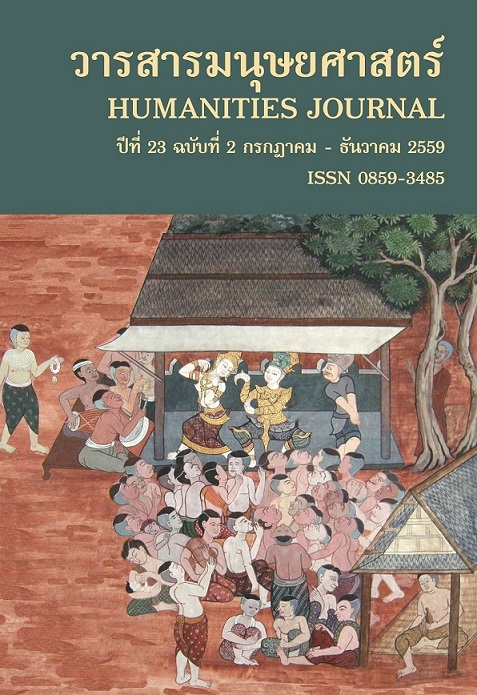A Literary Stylistic Analysis of Ernest Hemingway’s Short Stories What Might be Hiding Beneath Linguistics in "Big Two-Hearted River" Sequels?
Main Article Content
Abstract
This study is conducted to explore Hemingway’s famous short story sequence, “Big Two-Hearted River” on the basis of stylistic approach. The writer is a controversial figure, well-known for his understated prose style which he named the iceberg technique, or the technique of omission. Hemingway deviates from certain norms of language and therefore establishes his own norms to enhance the reader’s reading experience. The study aims to explain how the grammatical deviation Hemingway employs in his short stories enhances the aesthetic values of his work and how grammatical deviation characteristics found in his short stories are related to his iceberg technique. The theoretical framework used in this study is adapted from Short’s linguistic deviation (1996) with the sole focus on grammatical deviation.
Article Details
References
Barry, P. (1995). Beginning Theory: An Introduction to Literary and Cultural Theory. Manchester: Manchester University Press.
Ellegard, A. (1978). The Syntactic Structure of English Texts. Gothenburg: Acta Universitatis Gothoburgensis.
Hallengren, A. (2001). A Case of Identity: Ernest Hemingway. [Online]. Available:http://nobelprize.org/nobel_prizes/literature/articles/hallengren/index.html. [Accessed 14 January 2016].
Benson, J. (ed.). (1990). The Art of the Short Story. New Critical Approaches to the Short Stories of Ernest Hemingway. North Carolina: Duke University Press.
Fenton, J. (ed.). (1995). Ernest Hemingway: The Collected Stories. London: D. Campbell.
Hietanen, M. L. W. (2009). A Stylistic Comparison of Two Short Stories by Ernest Hemingway: "A Clean, Well-Lighted Place" and "Hills Like White Elephants.". School of Education and Communication, Jönköping University.
Leech, G. N. (1969). A Linguistic Guide to English Poetry. London: Longman.
Leech, G. N. and M. Short. (1981). Style in Fiction: A Linguistic Introduction to English Fictional Prose. London: Longman.
Meyers, J. (1985). Hemingway: A Biography. New York: Macmillan.
Ong, J. W. (1975). The Writer’s Audience is Always a Fiction. PMLA, 90(1), 9-21.
Short, M. (1996). Exploring the Language of Poems, Plays and Prose. London: Longman.
Tanto, T. (2009). Hemingway’s Internal Deviation from his Primary Norm in The Old Man and the Sea. A Biannual Publication on the Study of Language and Literature, 11(1), 18-38.
Toolan, M. J. (1990). The Stylistics of Fiction: A Literary-Linguistic Approach. London: Routledge.
Trodd, Z. (2007). Hemingway's Camera Eye: The Problems of Language and an Interwar Politics of Form. The Hemingway Review, 26(2), 7–21.
Zhang, Z. (2010). The Interpretation of a Novel by Hemingway in Terms of Literary Stylistics. The International Journal of Language Society and Culture, 30, 155-161.


